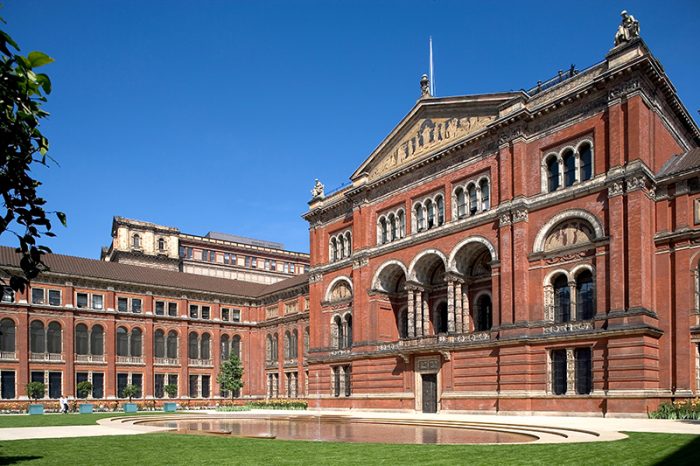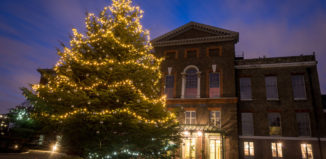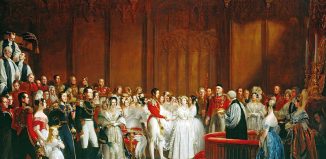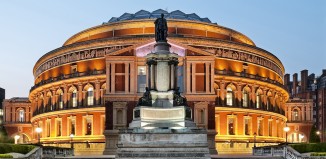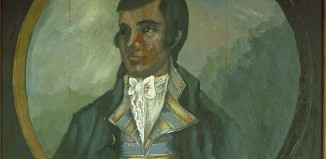Victoria and Albert Museum: A schoolroom for everyone
The Victoria and Albert Museum has just triumphed as the Art Fund’s Museum of the Year. Nicola Rayner discovers a few of its treasures
With over 4.5 million objects and seven miles of galleries, the Victoria and Albert Museum is one of the biggest museums of decorative arts in the world. It is also one of the most beautiful. Take the Medieval and Renaissance sculpture gallery, just to start with, on your right as you enter from Cromwell Road – however many times you’ve been to the V&A, it’s hard to resist wandering in to that beautiful light-drenched space and marvelling at the figures beneath the glass roof, each with its own rich story.
Influence of the Great Exhibition of 1851
Like many buildings on the site in South Kensington known as Albertopolis – the Science and Natural History museums, Imperial College, the Royal Colleges of Art and Music, and Royal Albert Hall – the seeds of the V&A were sown at the Great Exhibition of 1851, a pivotal event right in the middle of the 19th century which was the brainchild of Prince Albert.
In the wake of the First Industrial Revolution, the world was invited to display its achievements at the Great Exhibition – an event recorded at the original entrance to the museum, on the north side of what is now the John Madejski Garden. (A stretch of grass was all that used to lie between this entrance and Cromwell Road.) On the pediment of this building Queen Victoria, styled as Greek goddess, hands out wreaths to the countries that took part in the Great Exhibition. In a move away from the fashion for Gothic Revival at the time, that original building, in warm red-brick and terracotta with mosaic decoration, recalls the elegance of northern Italian Renaissance architecture; its partner in style is the Royal Albert Hall, which is perhaps no surprise. Henry Cole, the museum’s first director, was deeply involved with both projects.
Naming
The eternally grieving queen wanted it to be called the Albert Museum, but the government put its foot down: there were enough memorials to Albert, she was told. The Victorian and Albert was, in fact, the museum’s third name. Opening as the Museum of Manufactures in Marlborough House in 1852, it was later renamed the South Kensington Museum when it was established in what was then Brompton in 1857 (South Kensington was thought to sound more upmarket), with its final christening taking place in 1899 when Queen Victoria laid the foundation stone of new buildings along Exhibition Road and Cromwell Road.
Notable exhibits
Although the queen didn’t get her way in the naming of the building, her husband’s presence can still be felt in the museum, not least in the unforgettable Cast Courts, which were his idea and house a remarkable array of plaster casts taken from some of the world’s most famous sights including the museum’s tallest item, Trajan’s Column, reproduced from the marble original in Rome and displayed as two separate towers.
There’s also a copy of Michelangelo’s David, which arrived for Queen Victoria from the Grand Duke of Tuscany in 1857. One can only imagine the reaction of the blushing queen when the six-metre nude arrived on the doorstep, and David was swiftly re-routed to the museum and covered with a fig leaf half a metre high. That fig leaf has almost reached the same heady heights of fame as David himself, and currently stars in the V&A’s Undressed exhibition.
Despite the museum’s name, hardly any of the V&A’s collections belonged to Queen Victoria or Prince Albert (the most famous exception being a series of paintings, The Raphael Cartoons, which were loaned by Queen Victoria and are still on loan from HM the Queen today). However, a good place to explore the museum’s Victorian heritage is the fourth floor, where a model of the Crystal Palace, in which the Great Exhibition took place, can be admired, as well as numerous items from the exhibition itself and mementoes commemorating the great occasion.
Of particular note is Henry Courtney Selous’s painting The Opening of the Great Exhibition by Queen Victoria on 1 May 1851, portraying the Archbishop of Canterbury blessing the exhibition as commissioners, ministers and dignitaries surround the royal family. Look out for the man in Chinese dress on the right of the painting, who has foxed historians for years as no official Chinese delegation attended the opening (one version of the story casts him as a visiting sea captain who gatecrashed the opening, but looked so smart that he was invited to join the group).
Another painting to spot at the entrance to the 1760-1900 galleries is The Royal Commissioners for the Great Exhibition of 1851, featuring, alongside Prince Albert as chairman, Henry Cole and Joseph Paxton. The latter was the man responsible for the design of the Crystal Palace. He had worked previously as head gardener at Chatsworth where his lily house provided inspiration for his more famous creation.
We have much to thank Henry Cole for – a man at whom one only needs to glance to know he enjoyed his food. The V&A was the first museum in the world to feature a public restaurant and the sumptuously decorated, original “refreshment rooms”, the Morris, Gamble and Poynter Rooms, so loved in the Victorian era, have endured the years and are just as dazzling now as they must have been back then. Cole was also the driving force behind gas lighting at the V&A – the first museum in the world to have it – thus allowing for evening openings, which continue on Fridays to this day, to “furnish a powerful antidote to the gin palace”.
The exhibits are many and varied
All this is but to scratch the surface of what the V&A offers. Art historian and former director of the museum Sir Roy Strong called it “an extremely capacious handbag”, which perhaps gives a sense of what it feels like to wander from sculpture to jewellery, past furniture, textiles, photography, paintings, ceramics and theatrical ephemera, through an incredible collection of Asian art and design and 5,000 years of human creativity.
A schoolroom for everyone
The museum has been called many things. Cole described it as “a refuge for destitute collections” but perhaps his more flattering nickname – and one of which Prince Albert would approved, with his drive for education for all, was a “schoolroom for everyone”.
For more on the area of South Kensington known as Albertopolis, see www.discoverbritainmag.com/albertopolis

